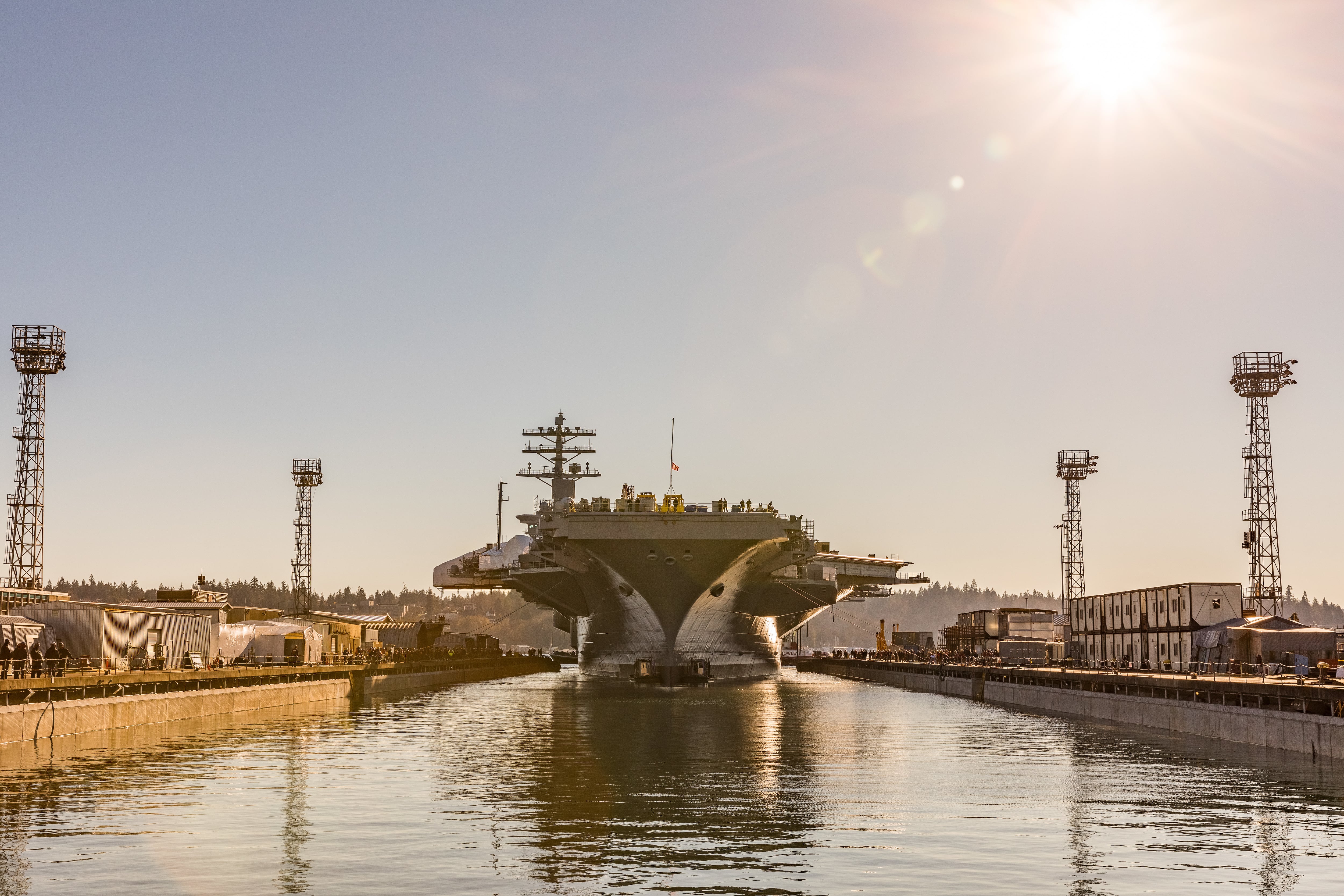The stricken fast-attack submarine Connecticut has returned to its Puget Sound Naval Shipyard dry dock in Washington state following construction work the Navy says will ensure the dock can better withstand a potential catastrophic earthquake.
Connecticut grounded during a mission in the West Pacific in October 2021, prompting a raft of reforms in the submarine community.
The stealthy and pricey Seawolf-class sub, one of just three, returned to the yard’s Dry Dock 5 on July 12 to continue repairs, with the boat expected to return to service in early 2026, according to Navy officials.
The Navy suspended submarine maintenance work at the four dry docks of the Puget Sound yard in January over concerns about whether they would hold up against a big earthquake, which could happen at any time due to a massive tectonic fault line off the Pacific Northwest coast.
Officials earlier this year emphasized that there was “no immediate risk” and that the work was largely preventative.
RELATED

Work done on Dry Docks 4 and 5 involved installing anchors inside the dock walls that will enhance structural integrity and ensure the safety of personnel, the submarines and the outside environment, while providing better early warning systems for dock workers, according to the Navy.
Seismic work continues on the Trident Refit Facility Delta Pier at the nearby Naval Base Kitsap-Bangor, which maintains U.S. Pacific Fleet’s ballistic missile submarines.
Officials determined seismic mitigation work was not required for Dry Dock 6 at the Puget Sound yard because of future planned improvements and the fact that the dock focuses on ships and aircraft carriers.
Puget Sound Naval Shipyard is the primary location for attack submarine and aircraft carrier maintenance on the West Coast.
The Navy routinely conducts seismic risk assessments on all ashore facilities in earthquake-prone areas. The service has previously performed several of these assessments at Puget Sound and took corrective actions based on the results.
This time, however, more modern scientific techniques and technologies cued the Navy to concerns of which they were previously unaware. So-called Level 1 and Level 2 seismic events “could potentially cause dry dock structural failures that pose a risk to our sailors and workforce and damage to our submarines,” an official explained in January.
Defense News reporter Megan Eckstein contributed to this report.
Geoff is the managing editor of Military Times, but he still loves writing stories. He covered Iraq and Afghanistan extensively and was a reporter at the Chicago Tribune. He welcomes any and all kinds of tips at geoffz@militarytimes.com.








